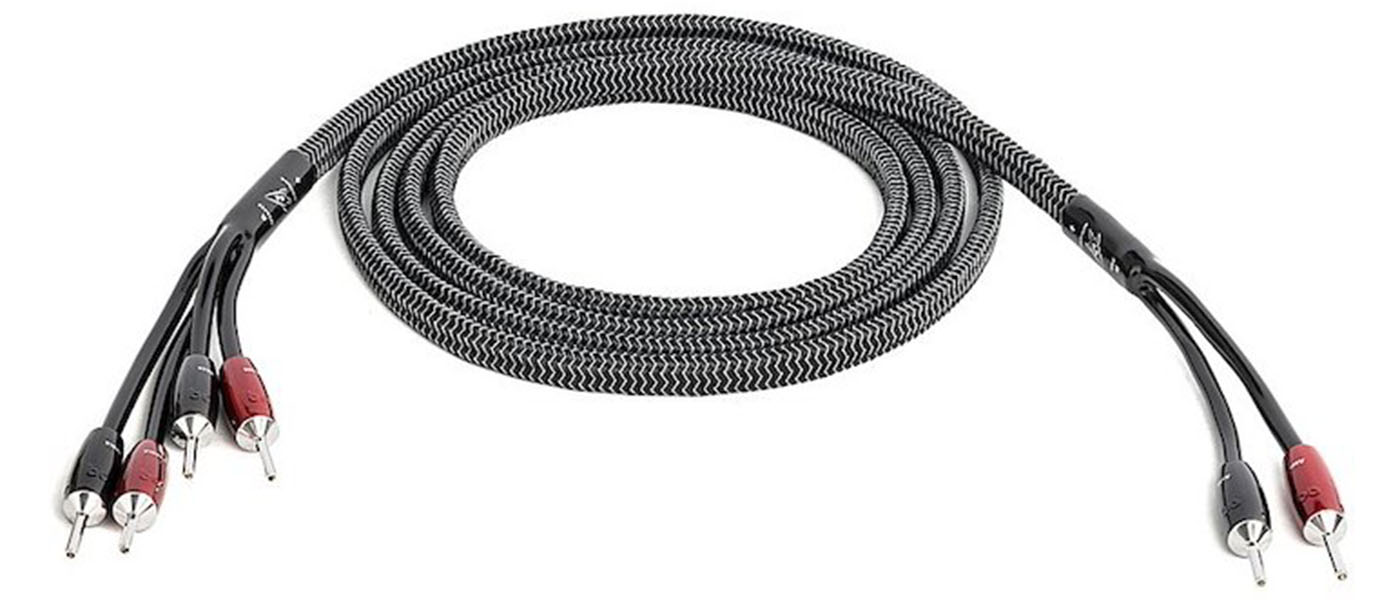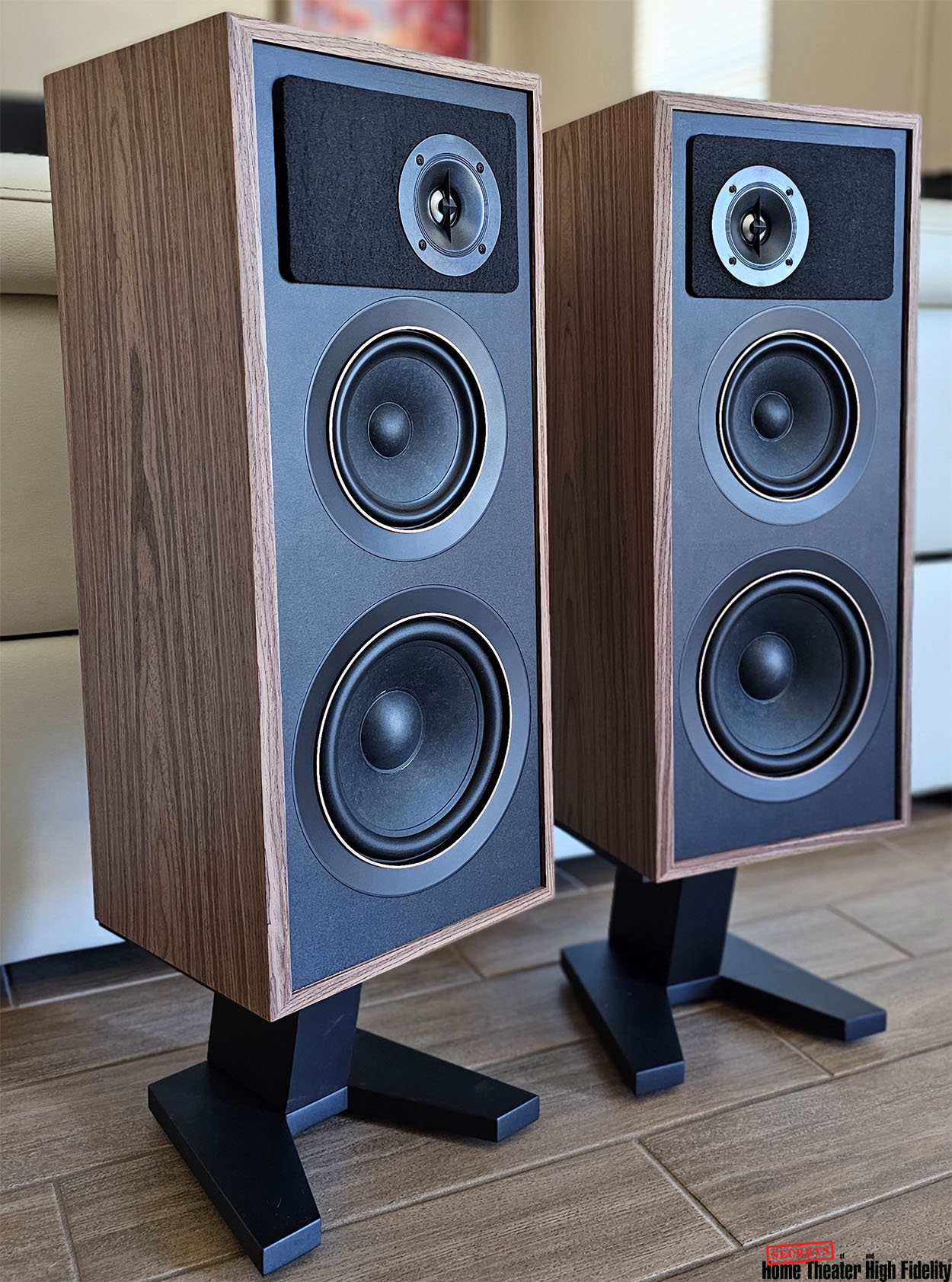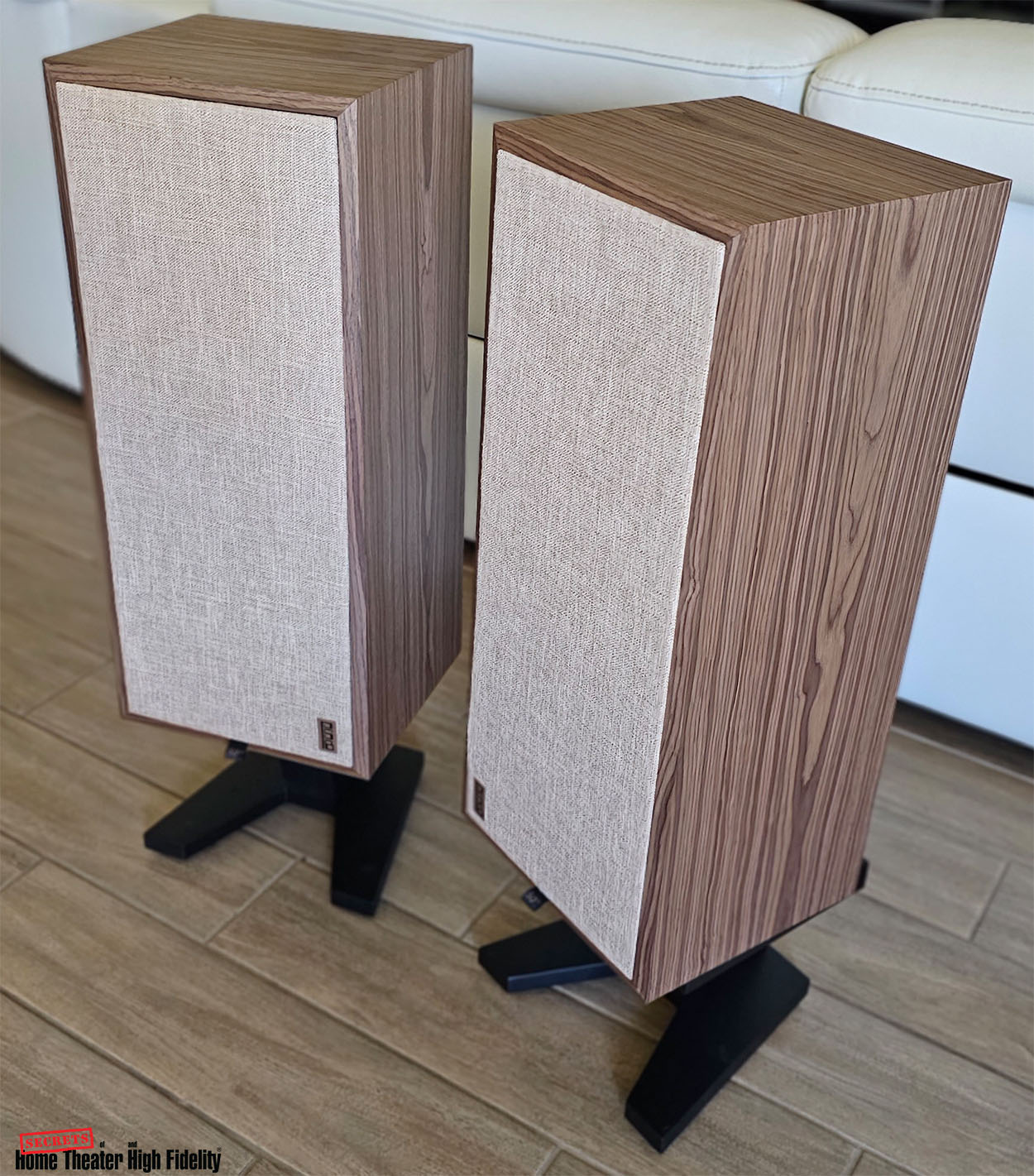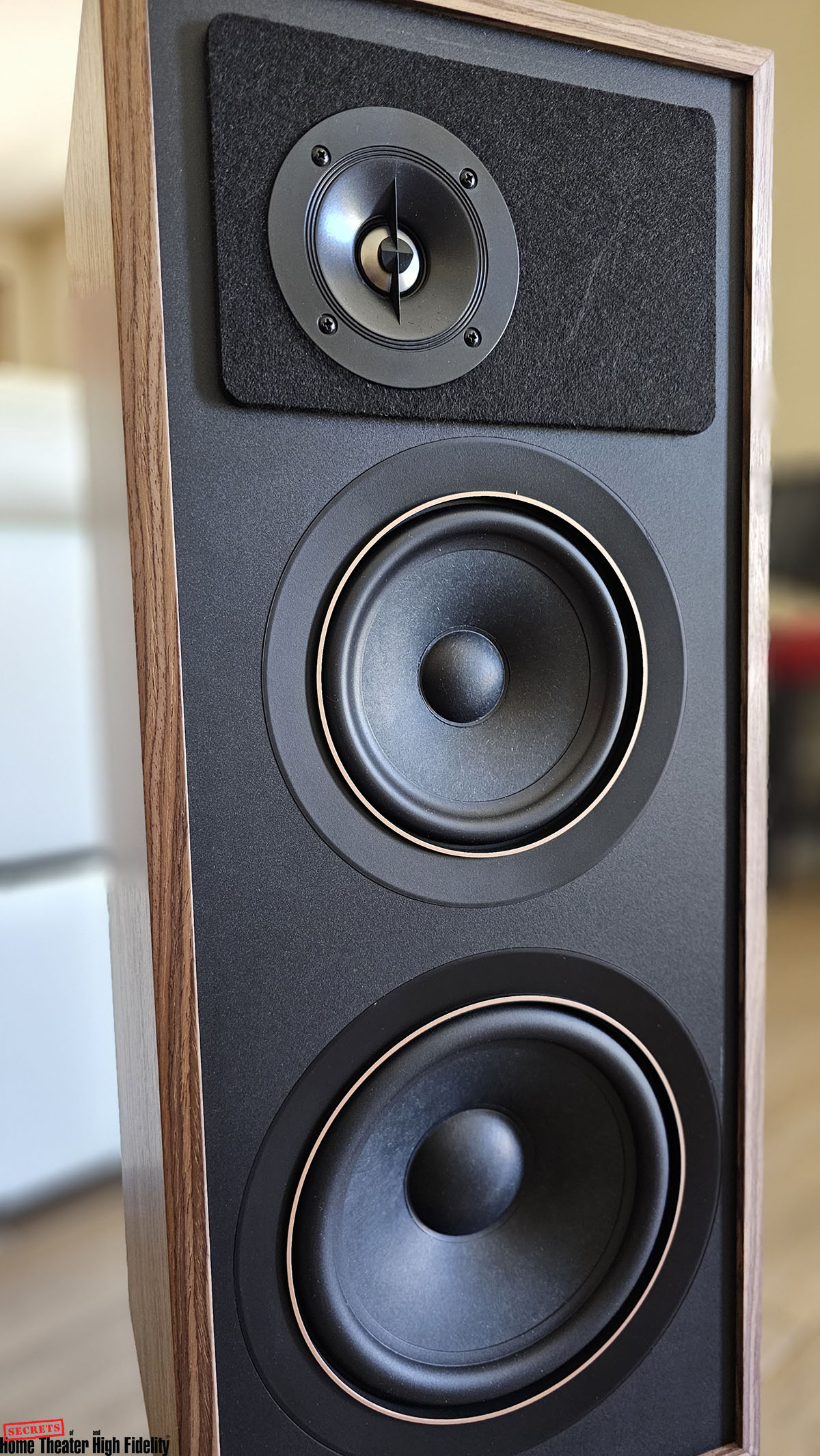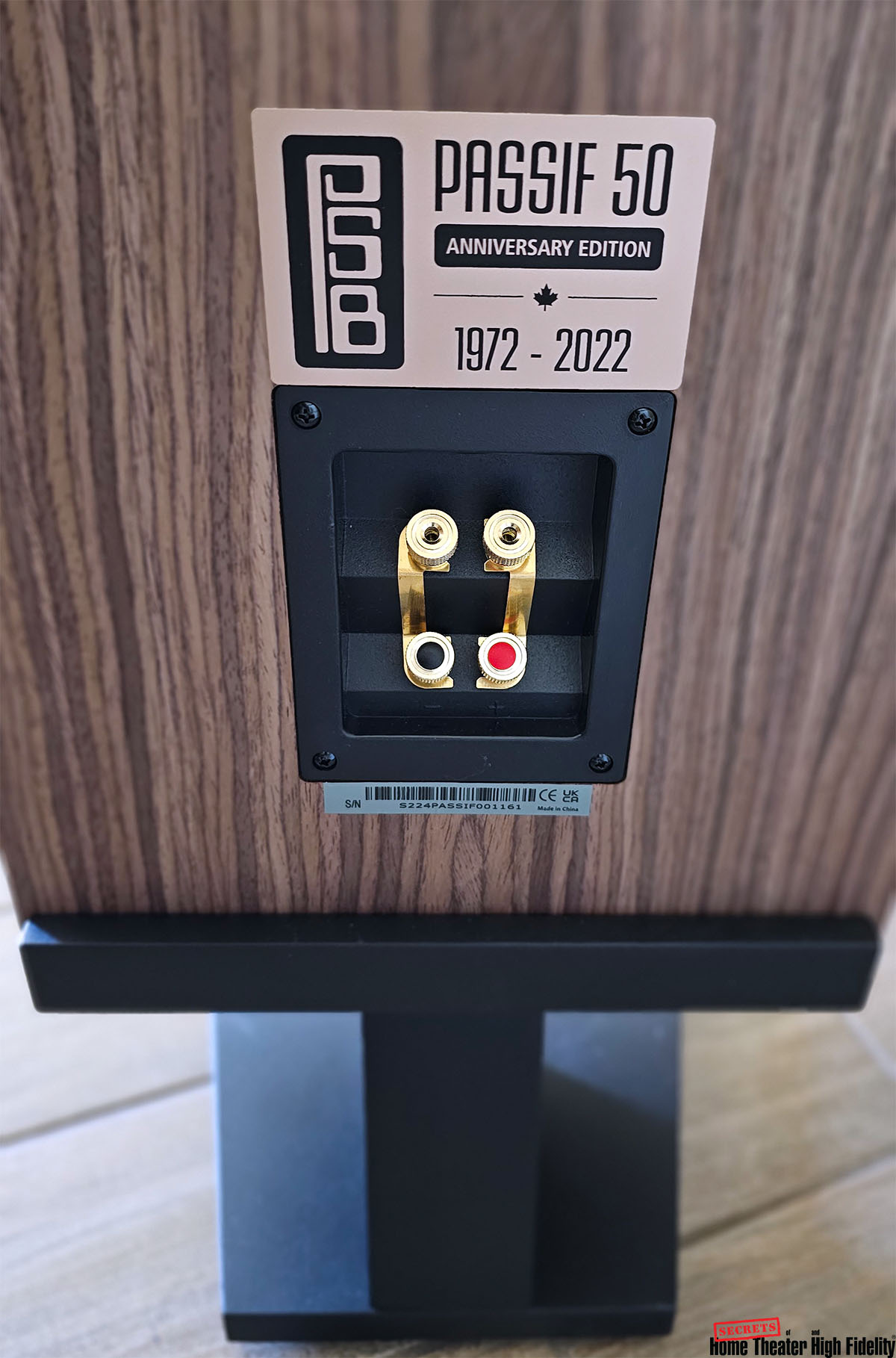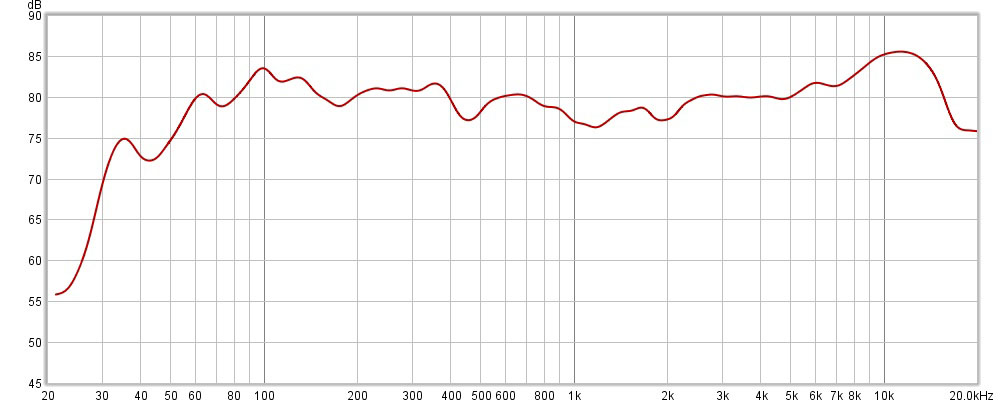PSB Passif 50 Speakers Highlights
- Retro look stand-mounted speakers.
- Great build quality and finish.
- Special edition feel with the insertion of the 50th-anniversary design touches.
- Nice sounding overall.
The Passif 50 speakers are designed to have a similar enclosure style and driver configuration to the past Passif I and Passif II designs from the 1970s era. The similarities end there, however, as PSB employs new design technology in the Passif 50. Hence, even though the past Passif models have helped PSB in establishing the brand’s reputation for performance and value, one should expect this new Passif 50 model to have improved performance compared to their predecessors. This review will cover some of the details regarding the design aspects and the performance that these speakers can deliver.
PSB, which stands for Paul and Sue Barton, is a Canadian speaker company founded in 1972 by Paul Barton. There is no question that the brand has established a strong reputation in the industry with its quality products. Even though the company is now owned by Lenbrook International, which also owns the NAD and Bluesound brands, Paul still continues his role as PSB’s Chief Acoustics Designer to this day.
Commemorating the 50-year anniversary of the brand, PSB has created the Passif 50 model, which revives the classic appearance of its past legendary products, the Passif I and II. But make no mistake about it, the Passif 50 may wear the old skin, but at its very core, it is a new product through and through. The Passif 50 leverages PSB’s long accomplishments in acoustics research and design experience; and employs new technological design elements trickled down from the PSB’s flagship Synchrony speakers.
Frequency Response:
On Axis @0 +/- 3db 50-20,000Hz
LF Cut Off @0 – 10db 30Hz
Sensitivity:
Listening Room 89dB
Impedance:
Nominal 6 Ohms
Input Power:
Recommended 30-200 Watts
Acoustic Design:
Tweeter 1” (25mm)
Titanium dome with ferrofluid
and neodymium magnet
Woofer:
6.5” (165mm)
cast aluminum basket, paper cone,
and filleted rubber surround
Crossover:
1800Hz, LR4
Design:
Type 2-way with 8” passive radiator
Dimensions:
(H x W x D) 26” x 11” x 10”
Size With Stands (H x W x D) 34” x 11” x 10”
Net Weight:
30.3 lbs. (13.7kg) per speaker
Finish:
Open-grain walnut veneer
MSRP:
$2,499 / pair
Website:
Company:
SECRETS Tags:
psb, passif50, classic, audiophile, loudspeaker
The Passif 50 is in between the normal bookshelf and floor-standing types of speakers in terms of its size. It is taller than a large bookshelf speaker but not tall enough to accommodate a proper floor-standing setup by itself. Hence, the speakers are supplied with custom short stands that raise them off the floor for proper listening setup. Although the stands are shipped unassembled, assembling them is a relatively easy endeavor. Each stand comes in three pieces and to assemble it one just needs to connect the center piece to the bottom and upper pieces using four Allen bolts per connection. Spikes or rubber feet (both are provided) can be added to the bottom of the stand to accommodate the type of floor the stand will be put on. The upper plate of the stand where the speaker sits has a slight upward inclination. This allows the tweeter of the speaker to fire to about the ear height from a typical seating position at a distance of 7-9 ft from the speaker.
Secrets Sponsor
The Passif 50 employs an off-center tweeter design, hence the speakers are sold in a mirror-image pair. It is a two-way design employing a 1” titanium dome tweeter, a 6.5” paper-cone woofer, and an 8” passive radiator. These drivers are new designs from PSB that contain some technological enhancements. The tweeter has ferrofluid damping and a neodymium magnet and is surrounded by a felt pad to minimize edge diffraction. The woofer and passive radiator have cast aluminum baskets that add rigidity to the overall construction for reduced distortion. The Passif 50 features dual 5-way binding posts to accommodate bi-wiring or bi-amping. Out of the box, these dual-binding posts are connected by dual metal jumpers.
The cabinet of the Passif 50 is well-braced and gorgeously finished in open-grain walnut veneer. The speakers come with magnetically attached cream-color woven cloth grilles, which enhance their retro appearance. The grille has a PSB old logo stitched near the bottom corner and a pull tab with a 50th marking on it. So, the 50th-anniversary design touches are really sprinkled on this product.
During the review, I had a chance to power the Passif 50 speakers using the Michi X3 integrated amplifier or the preamplifier/power-amplifier combination of the Classe CP-700 and Bel Canto Ref500s. Both options, although with slightly different tonal characters, yielded equally good results. Most of my reported observations below were based on the pairing of the Passif 50 with the Michi X3. The Passif 50 has a relatively moderate impedance (6 ohms) and sensitivity (89 dB), thus it is not hard to drive at all. The Michi X3 can supply 200 W/channel to 8-ohm loads, which was proven to be more than sufficient to get the best out of the Passif 50. The PS Audio PerfectWave Transport and the AURALiC Aries G1 streamer were used as the front end for the evaluation. In the latter part of the review, I also utilized my Rythmik F12SE subwoofer to fill in the lower bass region of the Passif 50.
Secrets Sponsor
The Passif 50 speakers were relatively easy to set up. The positions in my room that yielded the most optimum results for most other speakers also turned out to be an optimum location for the Passif 50 pair. They were about 8 ft apart, and their front baffles were about 4 ft from the wall behind them. Each of the speakers was about 9 ft away from my listening position. I followed the suggested configuration where the tweeters of the left and right speakers were located inward of the vertical symmetry plane of the speakers with respect to my listening position. I experimented with toe-in during my listening evaluation, but in the end, I settled with no toe-in. I found this position to give me the best tonal balance while still producing a good image and soundstage.
In a standalone configuration, without subwoofer augmentation and with the grilles off, the Passif 50’s immediately caught my attention with its open, effortless, and full sonic character. Their midrange sounded steady and natural, their treble was crisp and detailed, and their bass was sufficiently impactful. Their nearfield on-axis frequency response showed good flatness in the 50 Hz to 20 kHz region, which confirmed my impression of the fullness of their sonic characteristics. There was a slightly elevated treble response in the 8 to 12 kHz range, which indicated that the Passif 50s were not shy of treble energy. While this might contribute to the noticeable openness in the speakers’ presentation, it also led to a hint of brightness in the speakers’ sonic characters when listened to on-axis (toed-in facing the listener’s ears). This might be the reason why I preferred not having any toe-in in the final speaker setup. In my opinion, the no toe-in setup tamed the slightly elevated treble response and created a better response balance across the frequency spectrum. The speakers were also not bass-shy. The frequency-response plot confirmed this and indicated a useful bass response from the speaker down to the 50 Hz region. For most music, the bass produced by the Passif 50 was more than sufficient to create a satisfying bass foundation.

Diana Krall “From This Moment On”
The rich nuances of the track How Insensitive by Diana Krall from her album From This Moment On (2006) were conveyed beautifully by the Passif 50 speakers. The combination of piano, wind, brass, and string instruments in the music sounded full of textures and rhythmically engaging. The capability of the speakers to flesh out the sense of space depicted in the recording was excellent. The whole musical presentation sounded spacious and the speakers’ ability to place the various musical instruments in the proper soundstage layering was respectable.
The Passif 50 seemed to be a competent vocal reproducer as well. Diana Krall’s voice sounded natural and full-bodied with about the correct sibilance. The Passif 50 might not have the last word on smoothness, but nevertheless, they still captured the lushness in Diana Krall’s vocals, albeit to a lesser degree than what I have previously experienced. The slightly rough character of the Passif 50 response was not glaringly obvious and only noticeable in some music, hence it did not detract me from the overall enjoyment of the music.
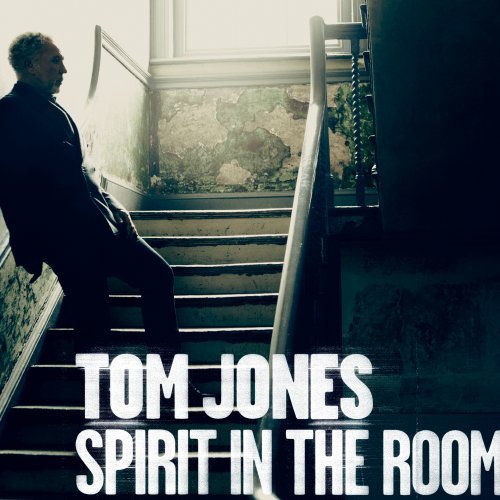
Tom Jones “Spirit in the Room”
The Passif 50 speakers are not large, however, there was no hint of smallness in their sonic presentation. Large orchestral music was portrayed at its proper size through the Passif 50 and did not sound diminutive or contrived. Their bass presence, which sounded tuneful and surprisingly impactful, was quite sufficient for most applications. The bass rhythm in the track Dimming of the Day from Tom Jones’ Spirit in the Room (2012) album carries the weight of the musical presentation and the Passif 50 managed to do justice in conveying it. While some of the lowest bass extension might not get reproduced as it was outside of the Passif 50 capabilities, the speakers did an excellent job of preserving and conveying most of the energy of the bass foundation in the music. I found the speakers were also adept at reproducing Tom Jones’ unique baritone voice, a testament to their solid midrange characteristics.
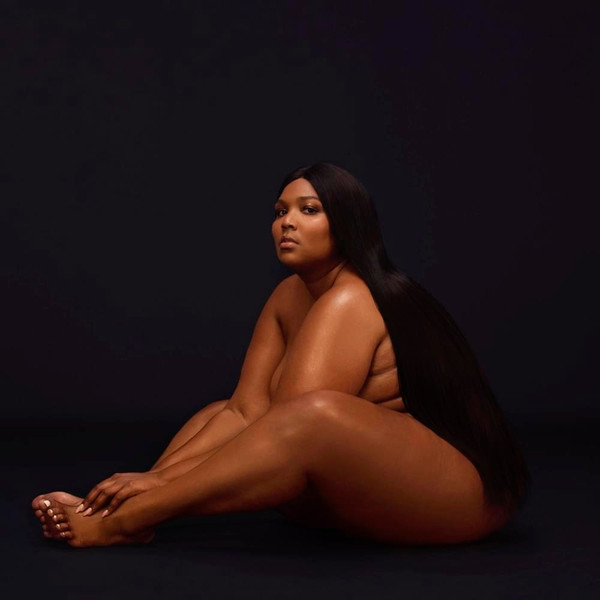
Lizzo “Cuz I Love You”
Although I mentioned that the Passif 50 speakers were not bass shy, I did miss the presence of the deep bass kicks when I listened to some bass-heavy music, such as the track Jerome by Lizzo from her album Cuz I Love You (2019). They could definitely use the help of a good subwoofer to fill in the last bit of the bass extension which might be present in some recordings. Pairing the Passif 50 with the Rythmik F12SE subwoofer, which could provide bass extension down to below the 20-Hz range, was a case in point. In such a setup, the Passif 50 speakers were run at full range and the Rythmik subwoofer was crossed over at around 50 Hz. Such a pairing produced awesome results, improving the bass viscerally and making the overall musical presentation more complete.
In Passif 50, PSB celebrates the brand’s success by delivering solid-sounding speakers with a retro look at a price that reflects its tradition of value.
- Appealing retro style
- Good build and finish quality
- Magnetically attached grille
- Nice custom stand design
- Solid sonic performance
- Smoother sonic characteristics
PSB does not call the Passif 50 a special edition product, but it does feel like one with the insertion of various 50th-anniversary commemorative design touches. The Passif 50 speakers might sport a retro style, but there is nothing retro at all about their sonic performance. These speakers leverage five decades of PSB’s technological know-how in speaker design, and they indeed deliver pleasing and competent sonic performance. Impressively, PSB manages to achieve all this while still maintaining its tradition of value, which is delivering very good-sounding speakers in well-constructed cabinets at a price that does not break the bank.


